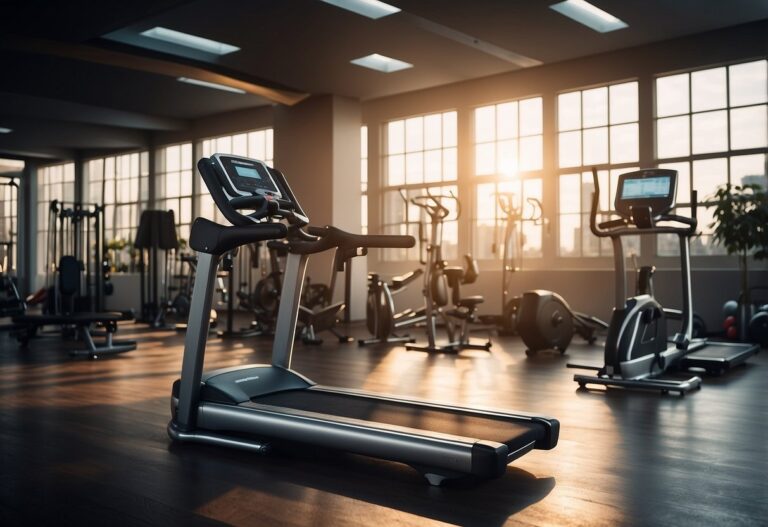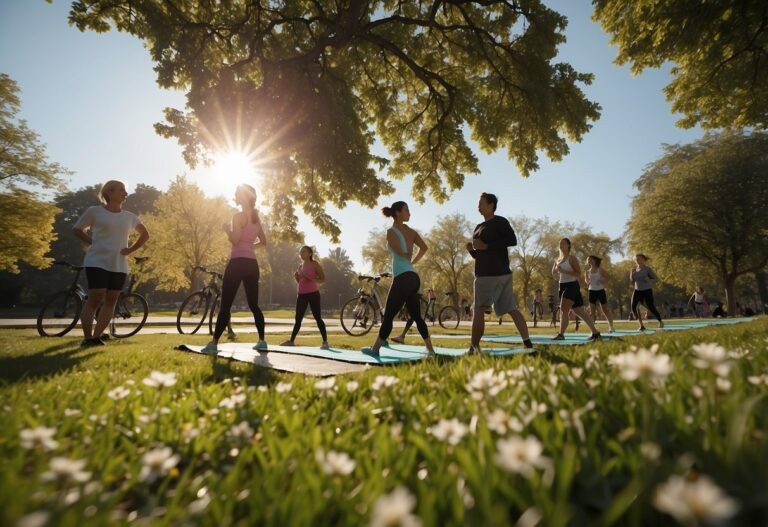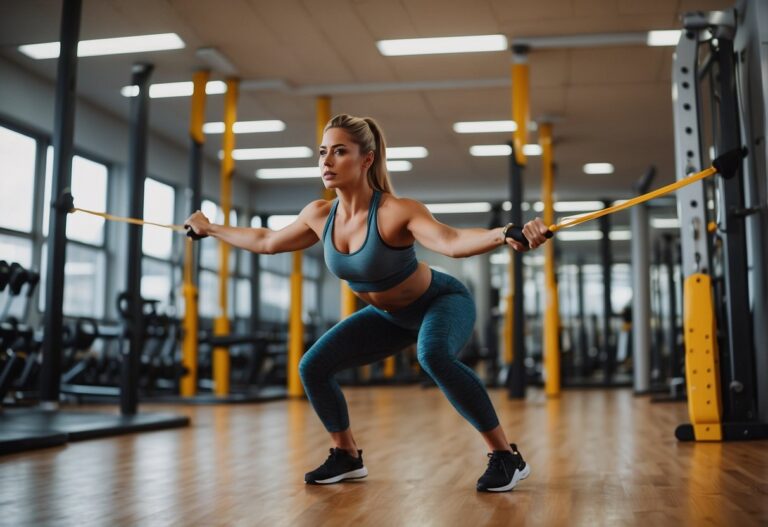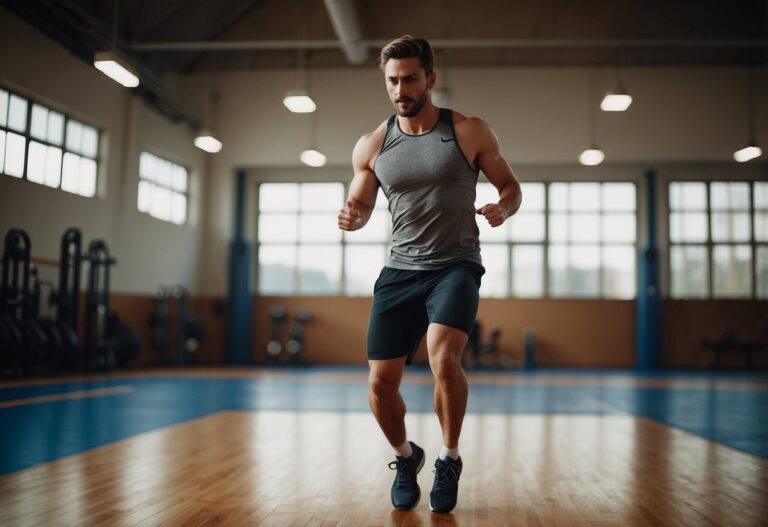Getting the most out of your rower workouts doesn’t have to be complicated or time-consuming. Rowing is a versatile exercise that can fit into even the busiest schedules, offering a full-body workout that targets multiple muscle groups. Whether you’re a beginner or an experienced rower, understanding some convenient tips can help you enhance your routine and achieve your fitness goals more efficiently.

Incorporating small adjustments and strategic techniques can make a world of difference in your rowing sessions. You’ll find that by paying attention to form, pace, and consistent practice, you can maximise both the health benefits and enjoyment of your workouts. This article will guide you through practical tips to help you make the most of your rowing machine.
Warm up with a 5-minute light row
Start your rowing session with a 5-minute light row. This gets your body ready and raises your core temperature. Begin with gentle strokes at a low intensity.
After the first minute, gradually increase your stroke rate to 18-20 strokes per minute. Keep it steady. This approach helps in smoothly transitioning your muscles and joints from rest to activity.
A brief warm-up also lets you mentally focus on your workout. Imagine this time as setting the stage for a successful exercise session. You prepare your body and your mind for the hard work ahead.
Focus on Proper Posture

Proper posture is essential when using a rowing machine. Start by keeping your back straight and avoid slouching. Slouching can lead to discomfort and even injury.
Keep your chest up and your shoulders relaxed. This helps prevent strain on your upper body. Imagine your upper body as a pendulum moving smoothly.
Push with your legs first. Many people mistakenly start with their arms which increases injury risk. Remember, legs, hips, arms on the drive, and arms, hips, legs on the recovery. Following this sequence ensures you’re using the right muscles.
Practicing these tips can improve your workout and help you avoid injuries.
Incorporate Interval Training
Interval training on a rower is a great way to boost your fitness. It mixes short bursts of intense rowing with rest or low-intensity periods. This method is very effective for both cardio and strength.
You could start with a workout like 10 rounds of 40 seconds of hard rowing and 20 seconds of rest. It’s a simple and powerful way to get your heart rate up.
For variety, try a pattern like 400 metres, then rest, 800 metres, then rest, and so on. Mixing distances keeps workouts interesting.
Use a Heart Rate Monitor
Using a heart rate monitor during your rowing sessions can really help you make the most out of your workouts.
Heart rate monitors give you real-time data on how hard you’re working. This way, you can stay in the right heart rate zones for your fitness goals. Whether you’re aiming for fat burning or cardio improvement, staying in the correct zone is key.
To get accurate readings, opt for a chest strap monitor. These are more reliable than wrist-based monitors. When you strap it on, it will connect to your rowing machine, providing constant updates on your heart rate.
Tracking your heart rate allows you to push yourself without overdoing it. It helps in pacing your workouts, ensuring you aren’t rowing too hard or too easy.
Heart rate monitors also help you track progress over time. Seeing how your heart rate changes with improved fitness can be motivating. It’s like having a coach with you, guiding you to optimise every row.
For rowing beginners, staying in the lower heart rate zones can help build endurance without putting too much strain on your body. Advanced rowers can push into higher zones to improve performance and strength.
Consider using a heart rate monitor in your next session and feel the difference it makes in your rowing workout.
Practise with resistance bands
Using resistance bands is a great way to enhance your rowing workout.
First, choose a resistance band that matches your fitness level. Start with a lighter band if you’re new, then progress as your strength improves.
During your workout, attach the bands to your rower or anchor them securely. This adds resistance, which can help build muscle strength and improve endurance.
Focus on your form. Keep your back straight and engage your core. Pull the band towards your torso using controlled movements. This helps target major muscle groups like your back, shoulders, and arms.
Practising with resistance bands can make your workouts more efficient and effective.
Track your progress with a rowing app

Using a rowing app can make a big difference in your workouts. It helps you track your progress and keep yourself motivated.
Apps like iFIT and Hydrow offer scenic rowing experiences. This makes your workouts more fun and engaging.
If you’re a beginner, try Ergatta. It offers tailored training plans to help you get started.
For those with a Concept2 rower, ErgData is perfect. It tracks key metrics like stroke rate and heart rate.
Taking your rowing to the next level? Asensei offers serious training tools. It helps you improve your technique and performance.
Choose the app that best fits your needs. This way, you can make the most of your rowing workouts.
Cool down properly after your workout
After completing your rowing workout, it’s important to cool down properly to help your body recover.
Start by slowing down your rowing pace. Gradually reduce the intensity until you’re rowing at a gentle, leisurely speed. This helps lower your heart rate slowly and prevents sudden drops in blood pressure.
Once off the rowing machine, do some light stretching. Focus on your arms, legs, and back. Hold each stretch for about 30 seconds to keep your muscles flexible and reduce soreness.
Don’t forget to breathe deeply during your cool down. Inhale through your nose, expanding your belly, then exhale through your mouth. This type of breathing can reduce stress and aid in recovery.
If you’re rowing in cold conditions, make sure you have dry, warm clothing ready. This helps prevent your body temperature from dropping too quickly, which could lead to chills or muscle stiffness. You can read more about this at British Rowing Plus.
Stay Hydrated

When you’re rowing, it’s crucial to stay hydrated. You lose a lot of fluids through sweat, especially during intense workouts.
Aim to drink at least two litres of water each day. When you’re rowing, you might need even more.
Consider having sports drinks or water during longer sessions to replace lost electrolytes. Being well-hydrated helps maintain your energy levels and performance.
Always keep a water bottle handy. Sip regularly, rather than gulping down large amounts at once. This way, your body absorbs the fluids better, keeping you hydrated throughout your workout.
Listen to Motivational Music
Listening to motivational music can boost your rowing workouts. Research shows that music can increase motivation and improve performance. Choose songs with a tempo between 120-140 beats-per-minute for the best results.
Use playlists that match your workout intensity. For example, a high-energy playlist can help maintain your stamina during intense sessions. Try songs like “Rocky” or “Eye of the Tiger” for their consistent tempo and motivating feel.
Experiment with different genres to find what works best for you. Whether it’s pop, rock, or dance, the key is to select music that inspires and energises you.
Wear comfortable workout clothing

When rowing, comfortable workout clothing is crucial. Tight-fitting clothes help prevent excess material from getting caught in the rowing machine’s moving parts. Loose clothes can snag, causing distractions or accidents.
Consider wearing form-fitting tops and bottoms made of breathable, moisture-wicking fabric to keep you dry. This will keep you comfortable during intense sessions.
For indoor rowing, choose shoes that provide stability and support. Shoes with non-slip soles can help keep your feet firmly planted on the machine’s footrests.
If you spend a lot of time rowing, you might want to wear gloves to prevent blisters and improve your grip. Look for gloves specifically designed for exercise or rowing.
Benefits of Rower Workouts

Rower workouts provide numerous benefits. They offer a full-body exercise, improve cardiovascular health, and are gentle on your joints.
Full-Body Exercise
Rowing is a fantastic full-body workout. Contrary to what many believe, it’s not just about your arms. When you row, about 65 to 75 percent of the effort comes from your legs, while the remaining 25 to 35 percent comes from your upper body and core. This means you are engaging multiple muscle groups simultaneously.
Using a rowing machine helps in building strength and endurance across your body. You’ll work on your calves, quads, hamstrings, glutes, back muscles, and arms. This makes rowing a comprehensive workout, ensuring that you can strengthen and tone your entire body without needing multiple machines or exercises.
Cardiovascular Advantages
Rowing is excellent for your heart and lungs. It enhances cardiovascular fitness by increasing your heart rate and improving oxygen consumption. When you row, your body works hard to supply oxygen to your muscles, enhancing your overall cardiovascular health.
Research highlights that rowing promotes efficient oxygen consumption and circulation, essential for heart health. Whether you row at a steady pace or incorporate interval training, you can effectively boost your cardiovascular endurance. Plus, rowing also aids in reducing the risk of heart disease, making it a heart-friendly exercise option.
Low-Impact on Joints
One of the key benefits of rowing is its low-impact nature. Unlike high-impact exercises like running, rowing is gentle on your joints. This makes it an ideal workout for people of all ages and fitness levels, including those with joint issues or arthritis.
When you row, the motion is smooth and controlled, which helps in minimising stress on your joints. This means you can get an intense workout without the risk of injury often associated with high-impact exercises. Additionally, the low-impact aspect of rowing makes it perfect for people looking to maintain or improve their fitness without placing undue stress on their body.
Correct Rowing Technique
Mastering the correct rowing technique is crucial for an effective workout and injury prevention. It involves maintaining proper form and posture, avoiding common mistakes, and employing effective breathing techniques.
Proper Form and Posture
To start, place your feet securely on the footpads with the straps snugly tightened. Sit tall with your back straight and your shoulders relaxed. Your shins should be vertical, and your knees should be slightly bent. This is known as the “catch” position.
When you begin the stroke, push firmly with your legs first while keeping your arms straight. As your legs extend, start pulling the handle towards your chest. Make sure to keep the handle at your mid-chest level.
Finally, complete the stroke by leaning back slightly and engaging your core. Your arms should then finish the stroke by pulling the handle into your body. Reverse these steps to return to the starting position.
Common Mistakes to Avoid
Avoid bending your back. Always aim to keep your spine straight to prevent strain. Don’t start pulling with your arms first; the power should come from your legs. This common error reduces the effectiveness of your workout and can cause injury.
Another mistake is overreaching at the beginning or end of the stroke. Your range of motion should be controlled and smooth. Overextending can lead to mechanical inefficiency and increased risk of injury.
Make sure your stroke rate isn’t too high. Rapid strokes might seem like more work is being done, but they can reduce the quality and power of each stroke. Aim for steady, powerful strokes rather than fast, shallow ones.
Breathing Techniques
Breathing is an often overlooked aspect of rowing. Begin by inhaling deeply as you drive back on the seat. This helps to deliver oxygen to your muscles. Exhale fully as you glide back to the starting position, releasing any tension.
Each phase of the rowing stroke should align with your breathing. For example, take a breath in as you push off with your legs, and then breathe out as you pull the handle towards your chest and lean back.
Implement these techniques to maintain a rhythm and maximise your efficiency. It’s similar to breathing in sync with your movements in other exercises like running or swimming. Aim to keep your breathing steady and coordinated with each phase of the row.
Incorporating Rowing into Your Routine
Rowing can be a versatile and effective addition to your workout routine. This section covers how to warm up and cool down, mix rowing with other exercises, and track your progress.
Warm-up and Cool Down
Before starting your rowing workout, spend 5-10 minutes on a light warm-up. This can include minutes of gentle rowing or dynamic stretches to get your heart rate up and muscles ready. Focus on movements that engage your whole body, like leg swings, arm circles, and torso twists.
After your rowing session, cool down with 5 minutes of slow-paced rowing. This helps your heart rate to gradually decrease. Incorporate static stretches targeting the major muscle groups used during rowing, such as your quads, hamstrings, glutes, and back. Hold each stretch for 15-30 seconds to improve flexibility and prevent soreness.
Mixing Rowing with Other Exercises
Incorporate rowing into your fitness schedule by setting specific days for rowing workouts. For instance, you might choose to row on Monday, Wednesday, and Friday. This allows you to dedicate other days to different activities like weight training, yoga, HIIT, or running.
Combining rowing with other exercises ensures a well-rounded fitness routine. You can alternate between rowing and these exercises within the same session. For example:
- 10-minute row
- 10-minute strength training (e.g., push-ups, squats)
- 10-minute row
- 10-minute stretching or core work
This mix keeps your workouts varied and engages different muscle groups, promoting balanced fitness.
Tracking Your Progress
Tracking your progress is crucial for staying motivated and improving your performance. Keep a log of your rowing workouts, noting the distance rowed, duration, and any personal bests. You can do this in a notebook or a fitness app.
Set specific, achievable goals, like increasing your rowing distance or improving your time for a set distance. Review your log regularly to identify patterns and areas for improvement. For example, if you see your times gradually improving, it’s a sign that your fitness is increasing.
Monitoring progress not only helps you stay on track but also provides a sense of accomplishment as you achieve your goals.







